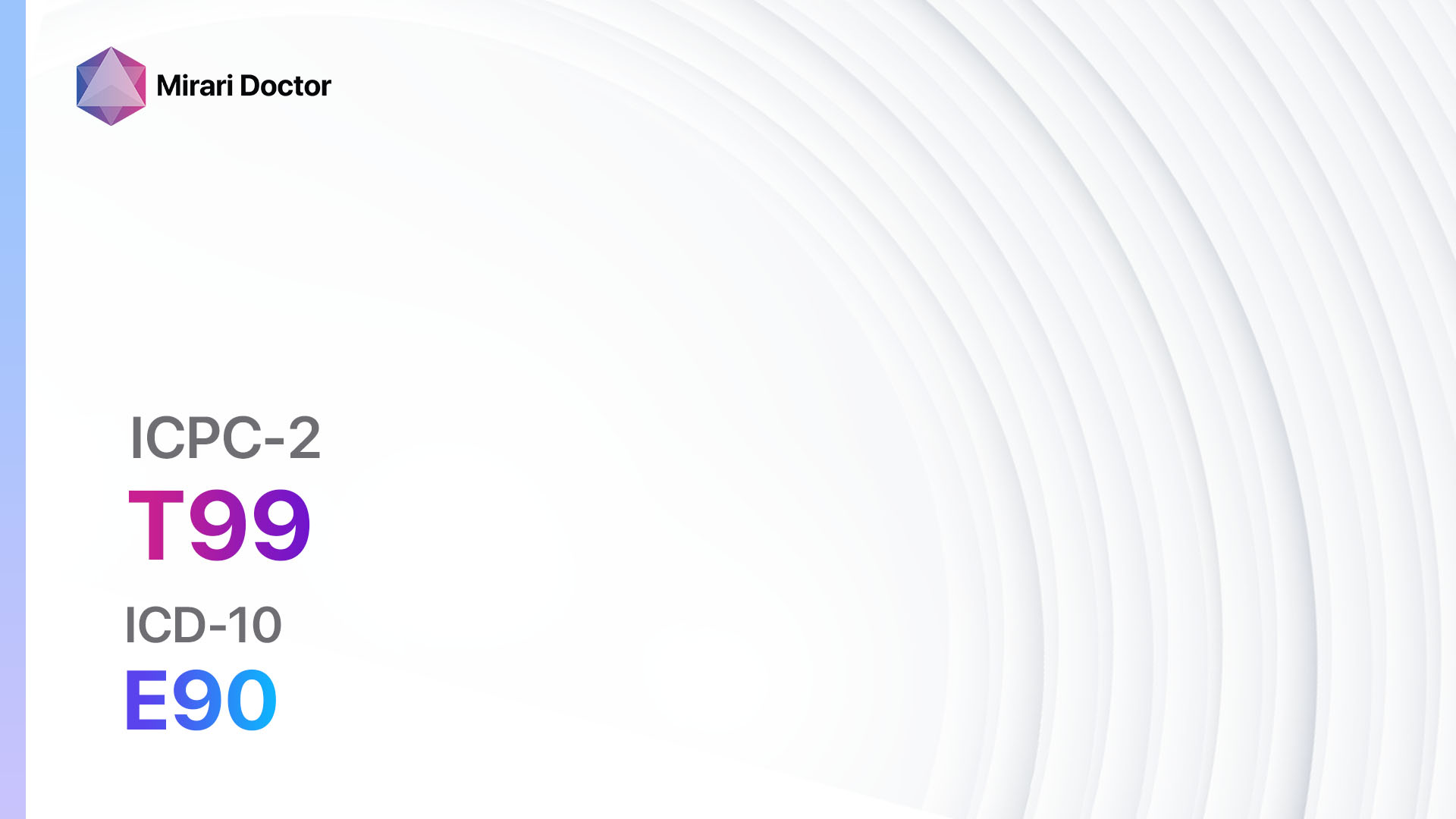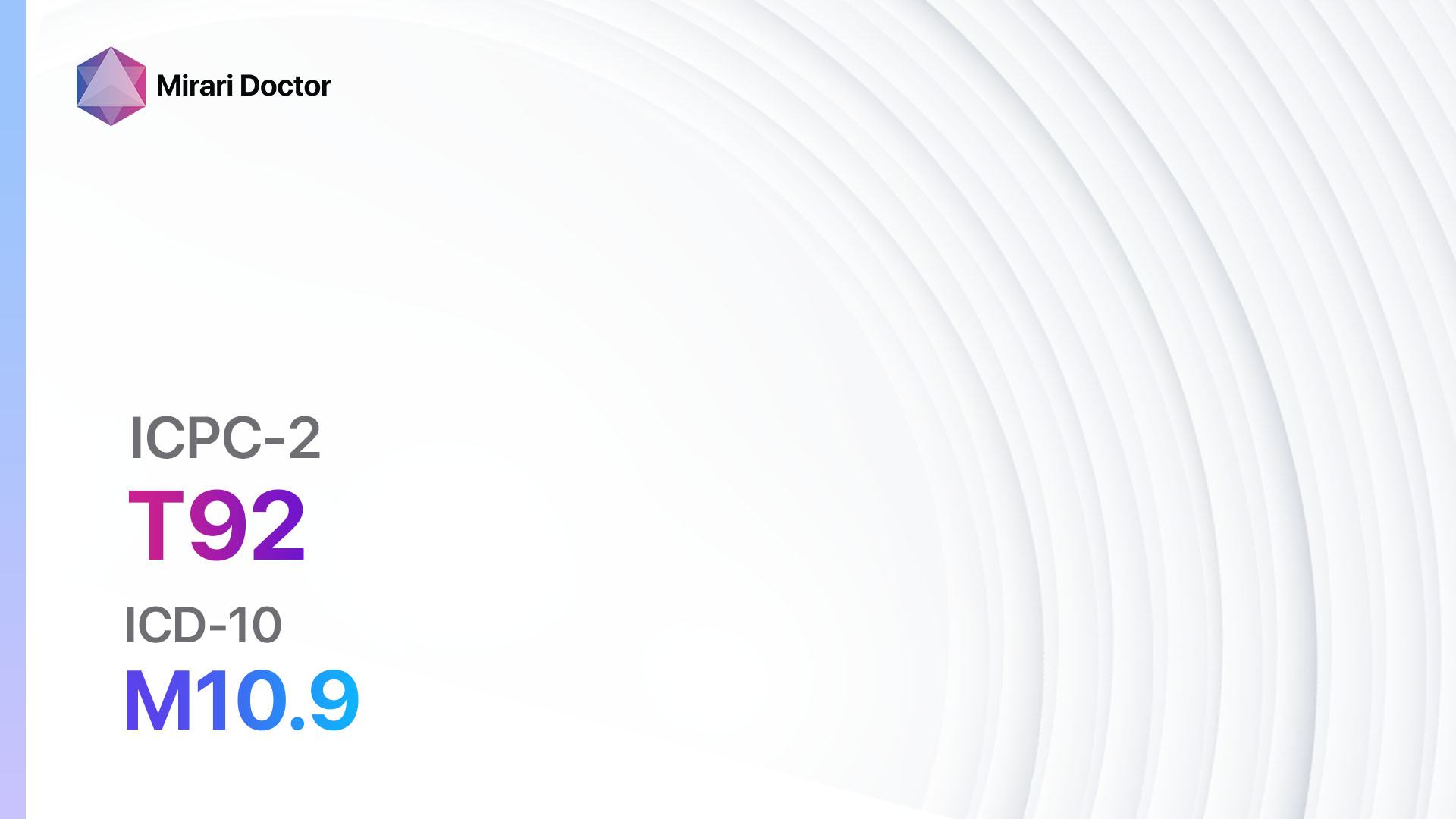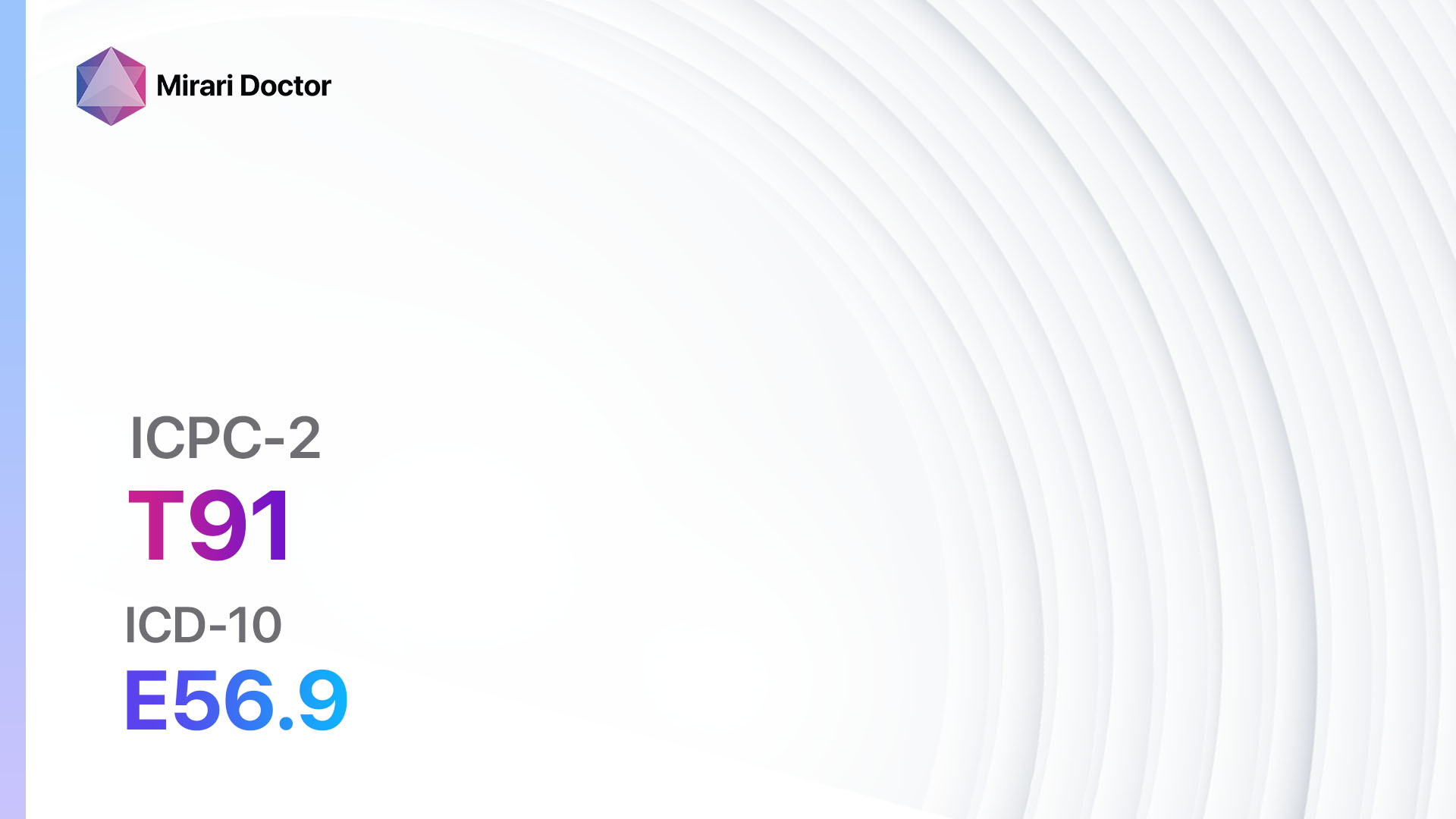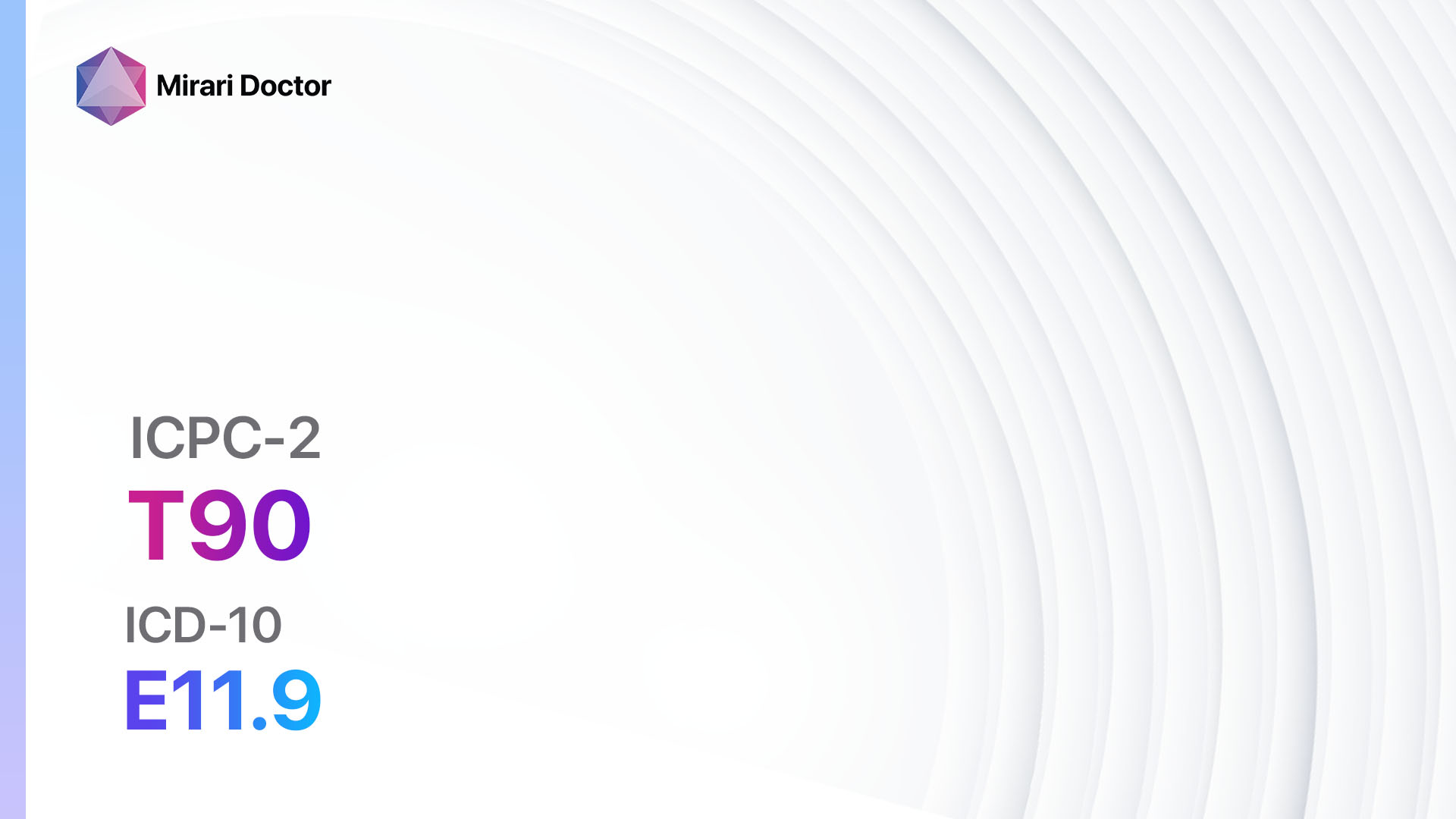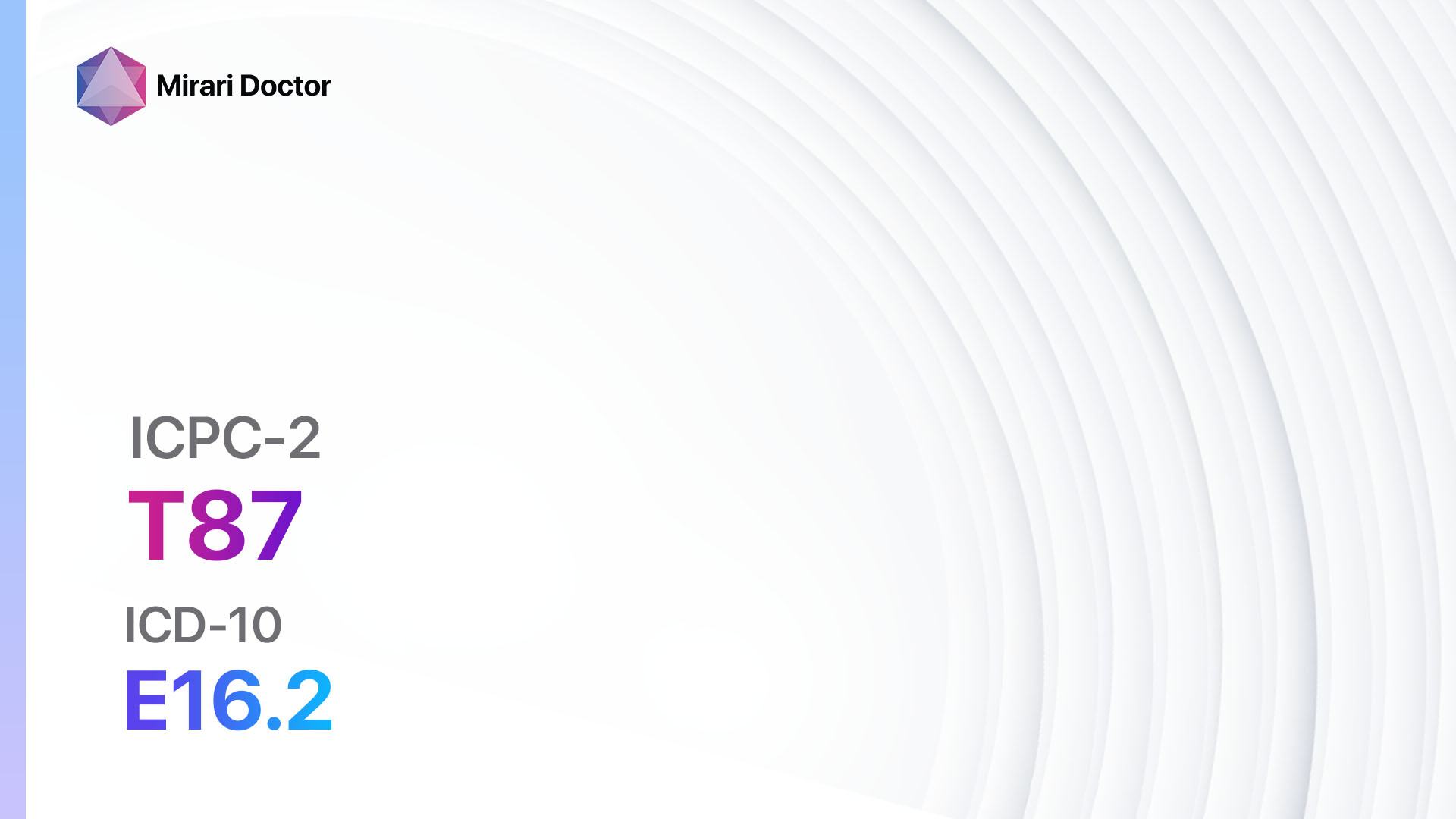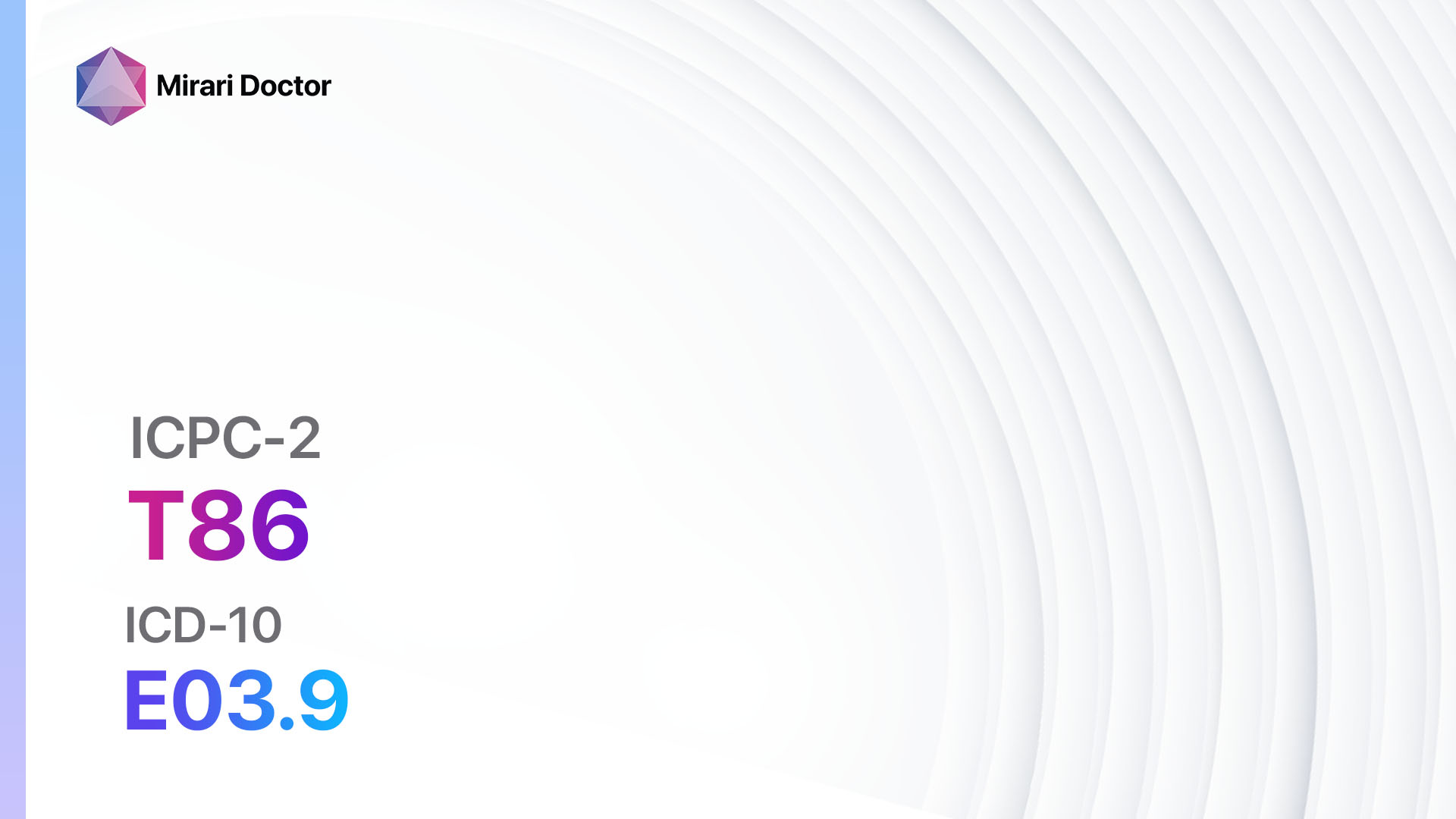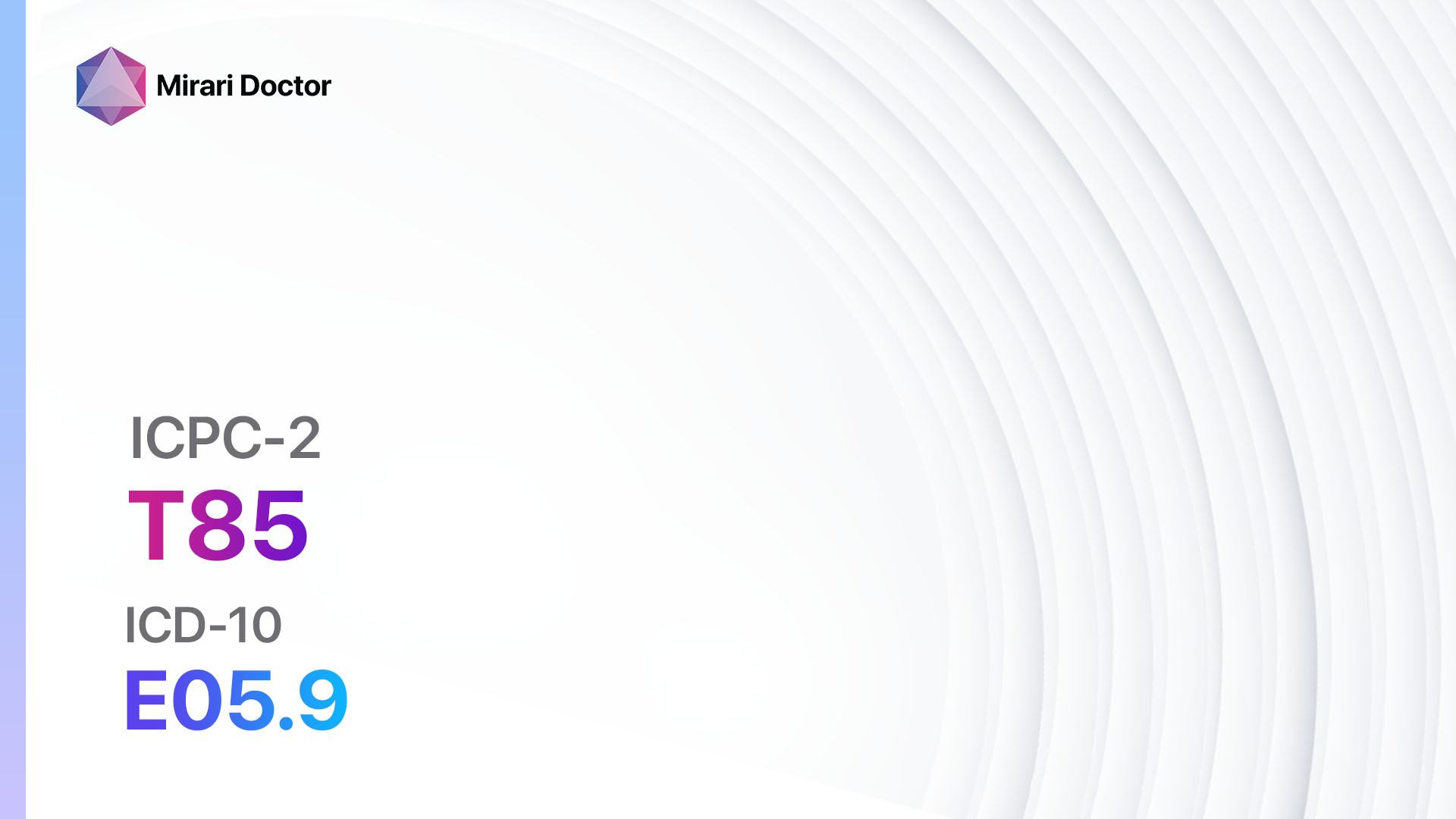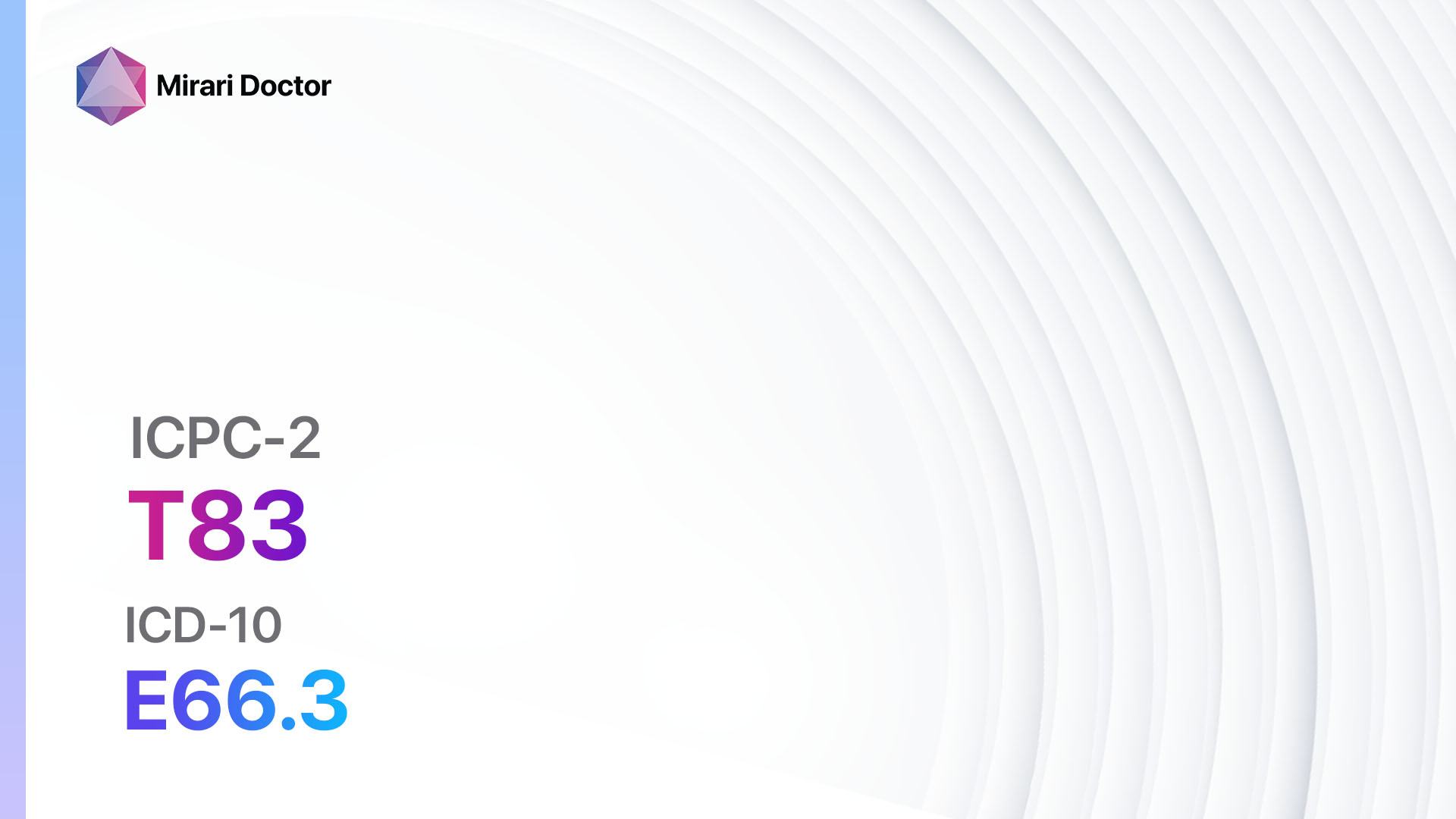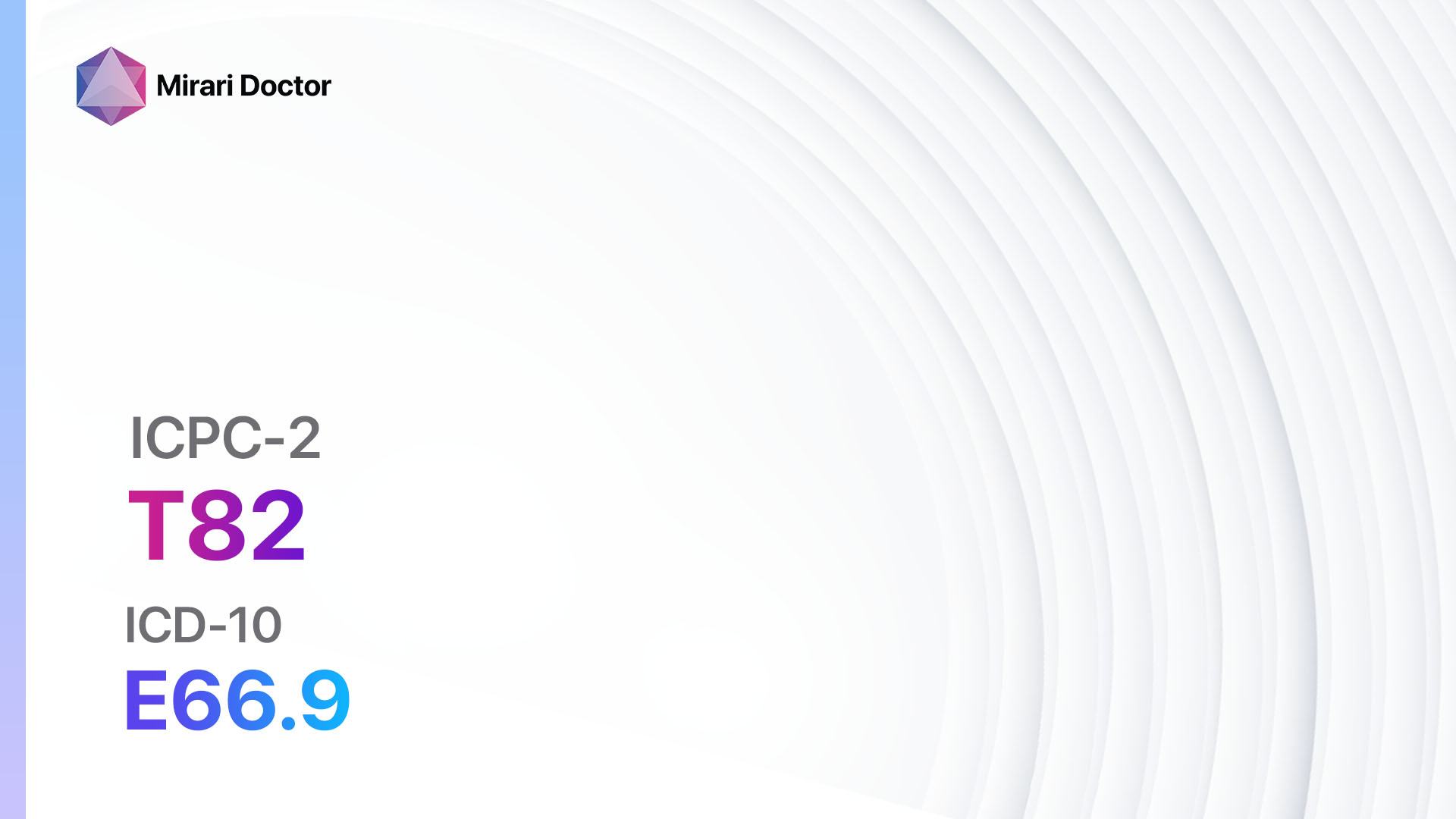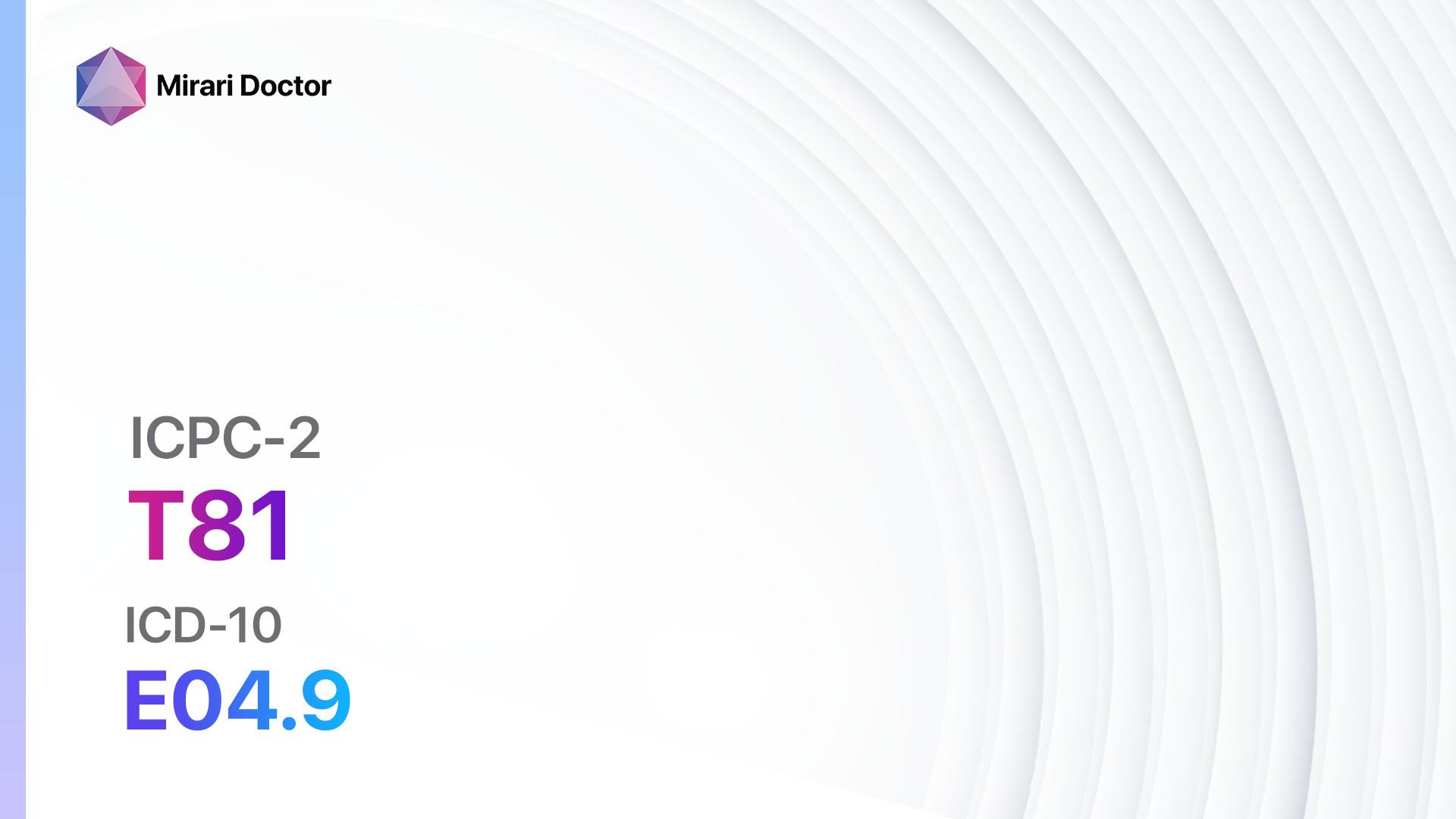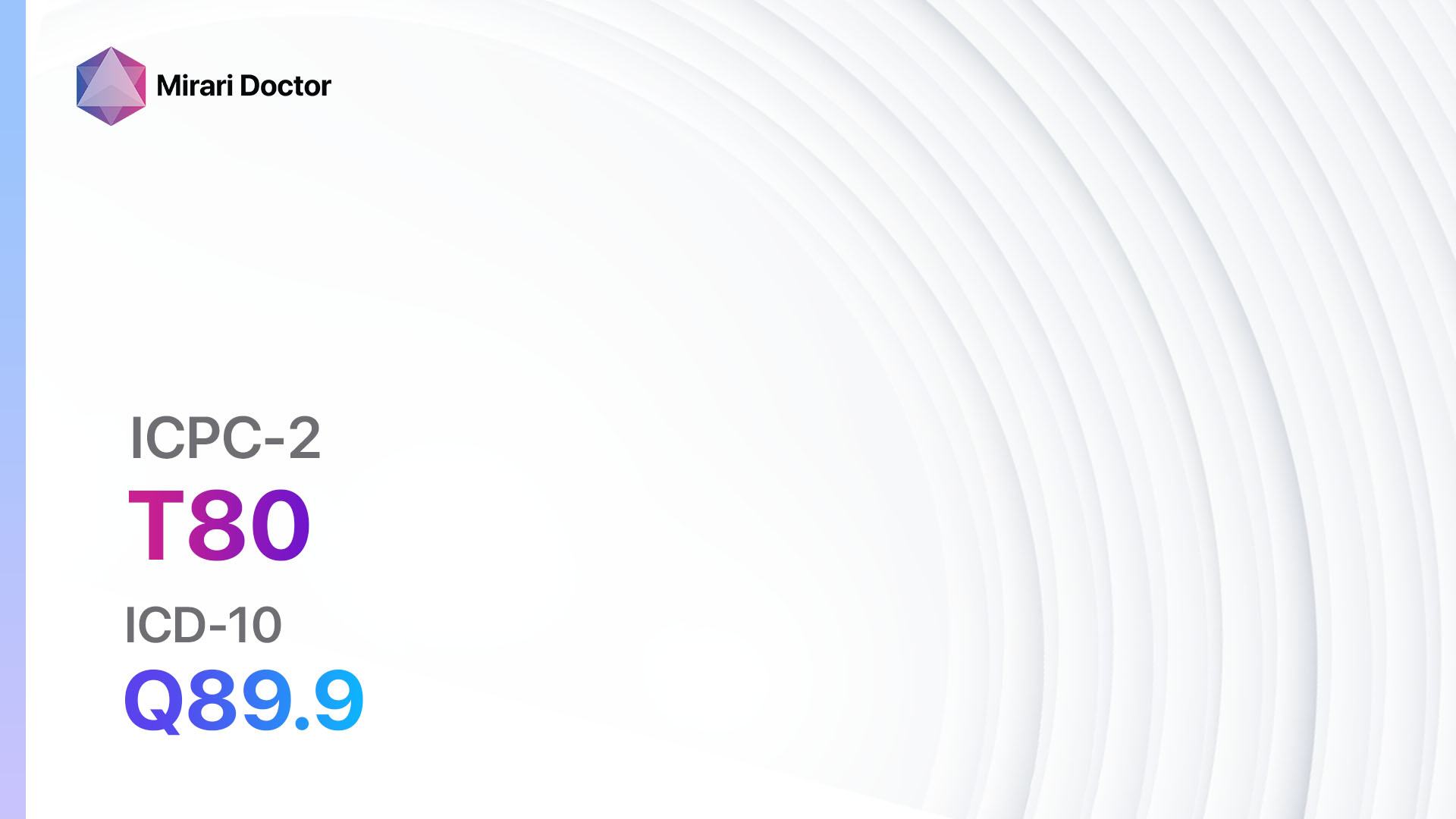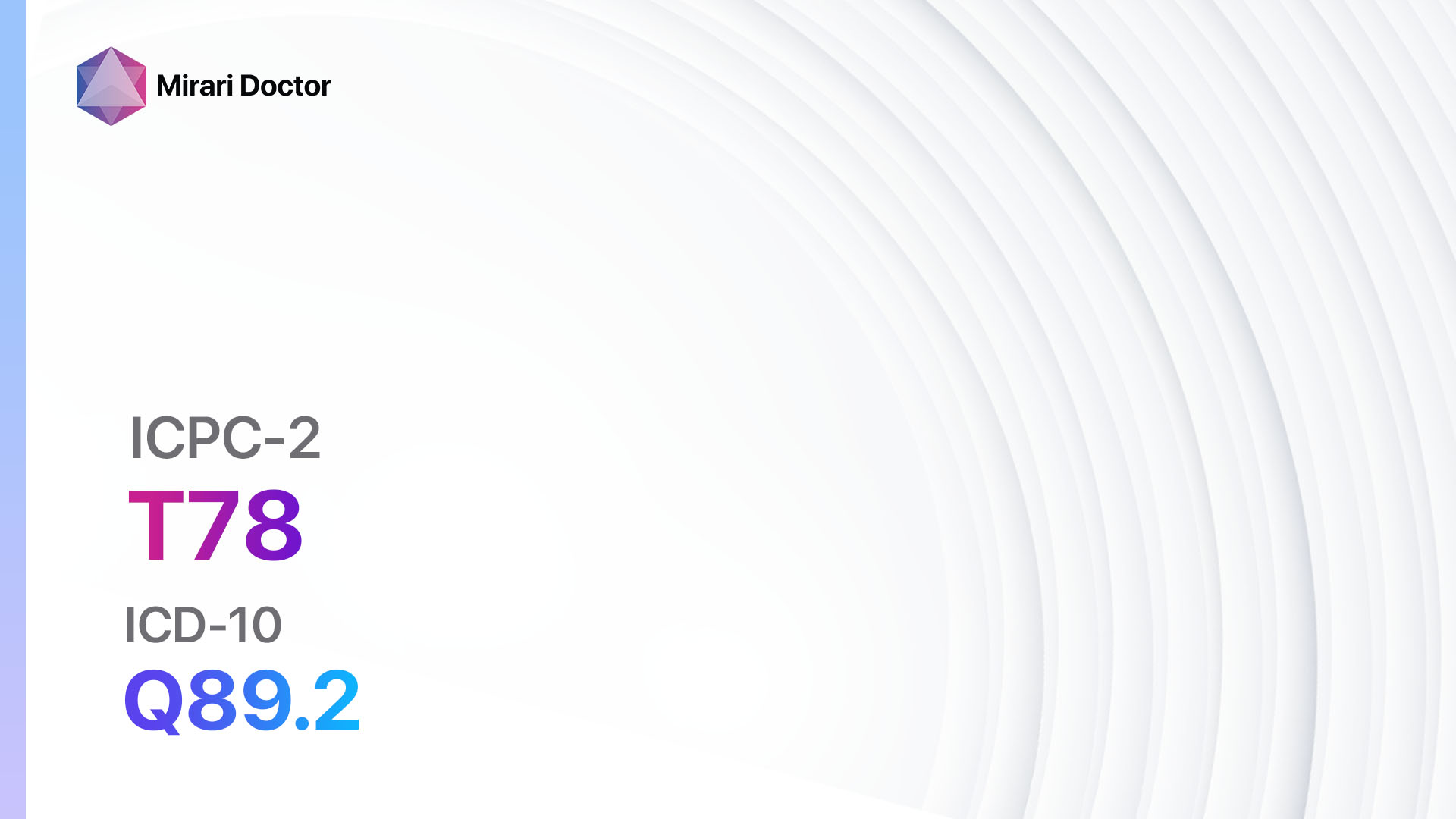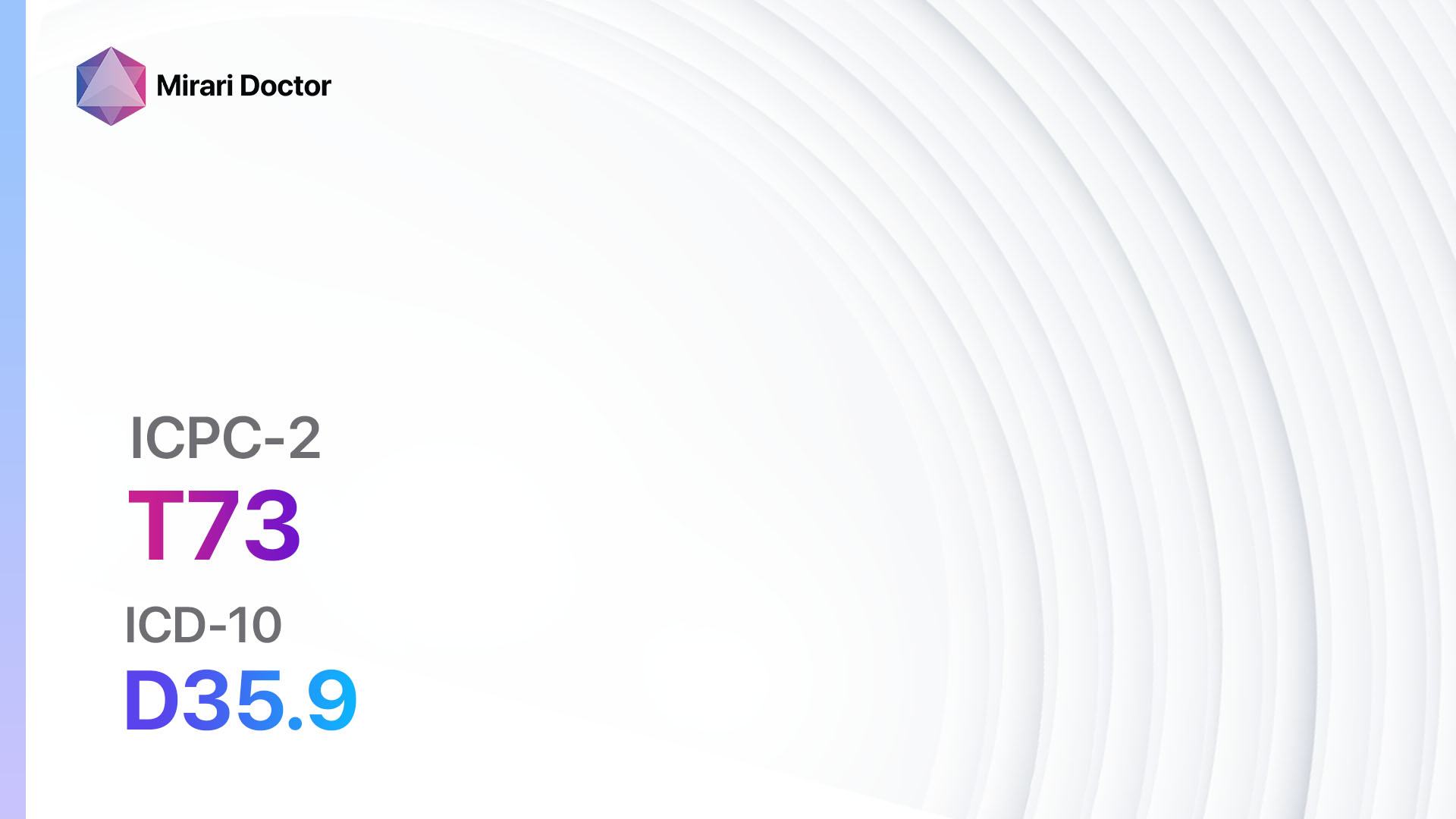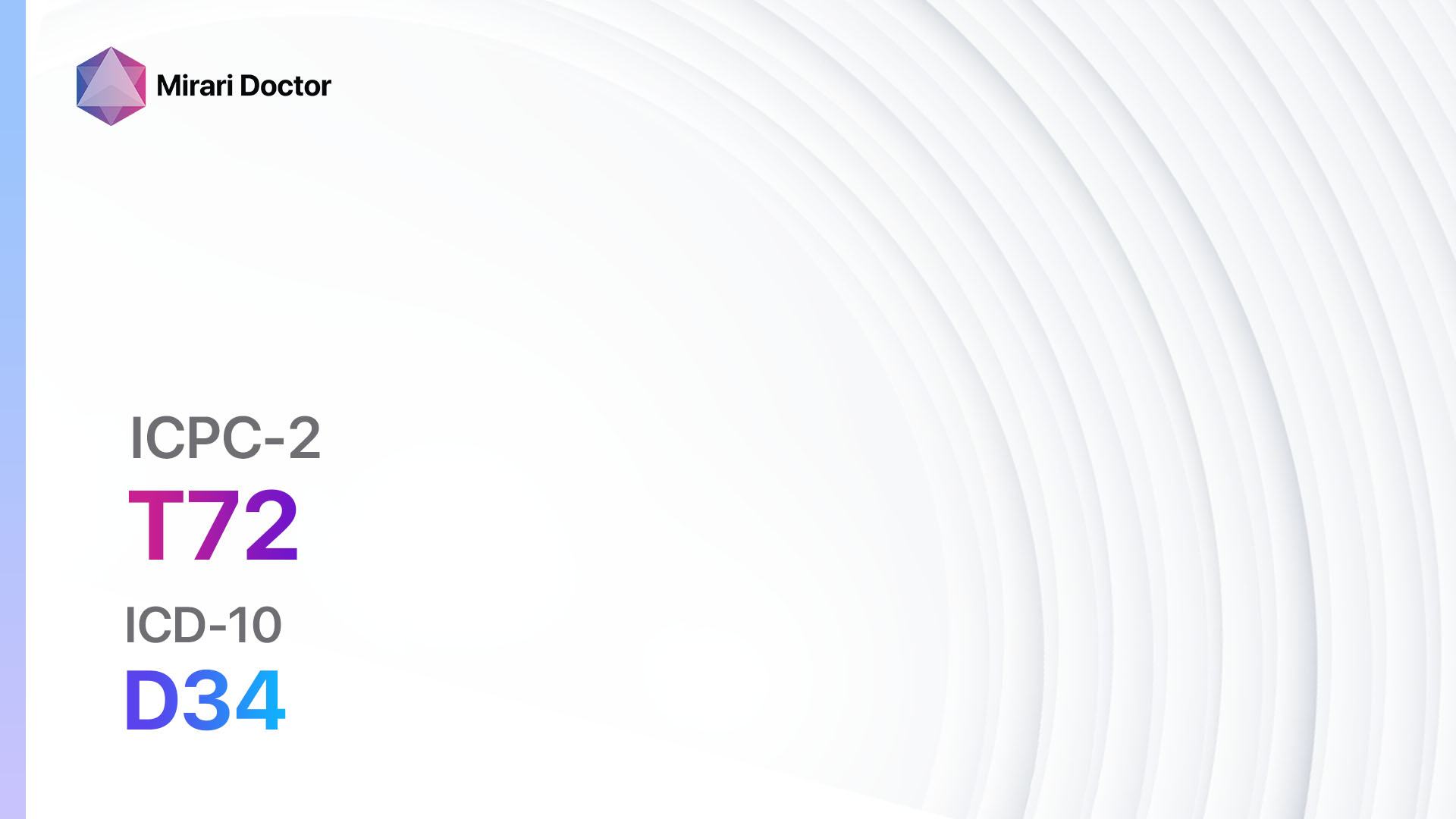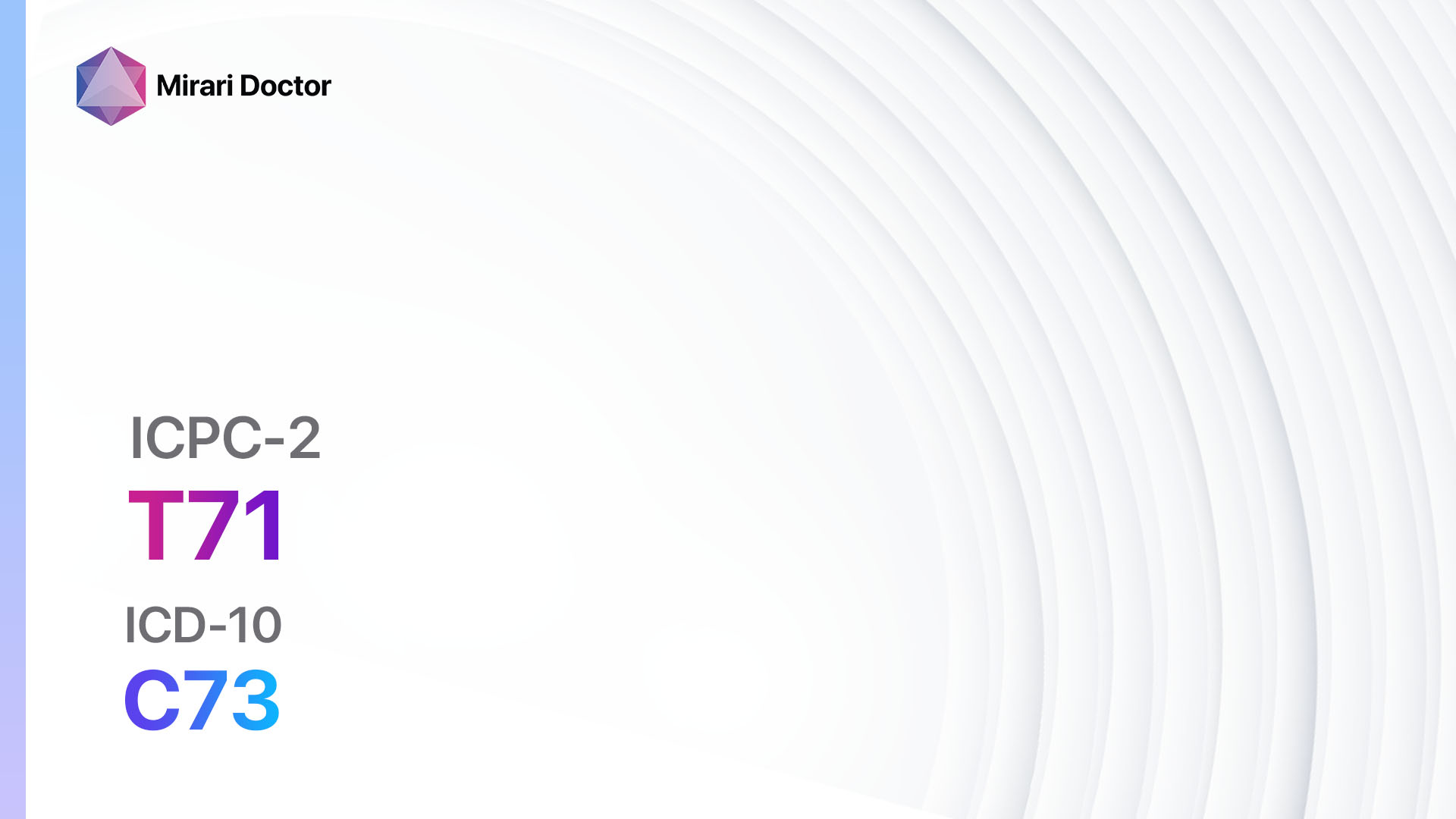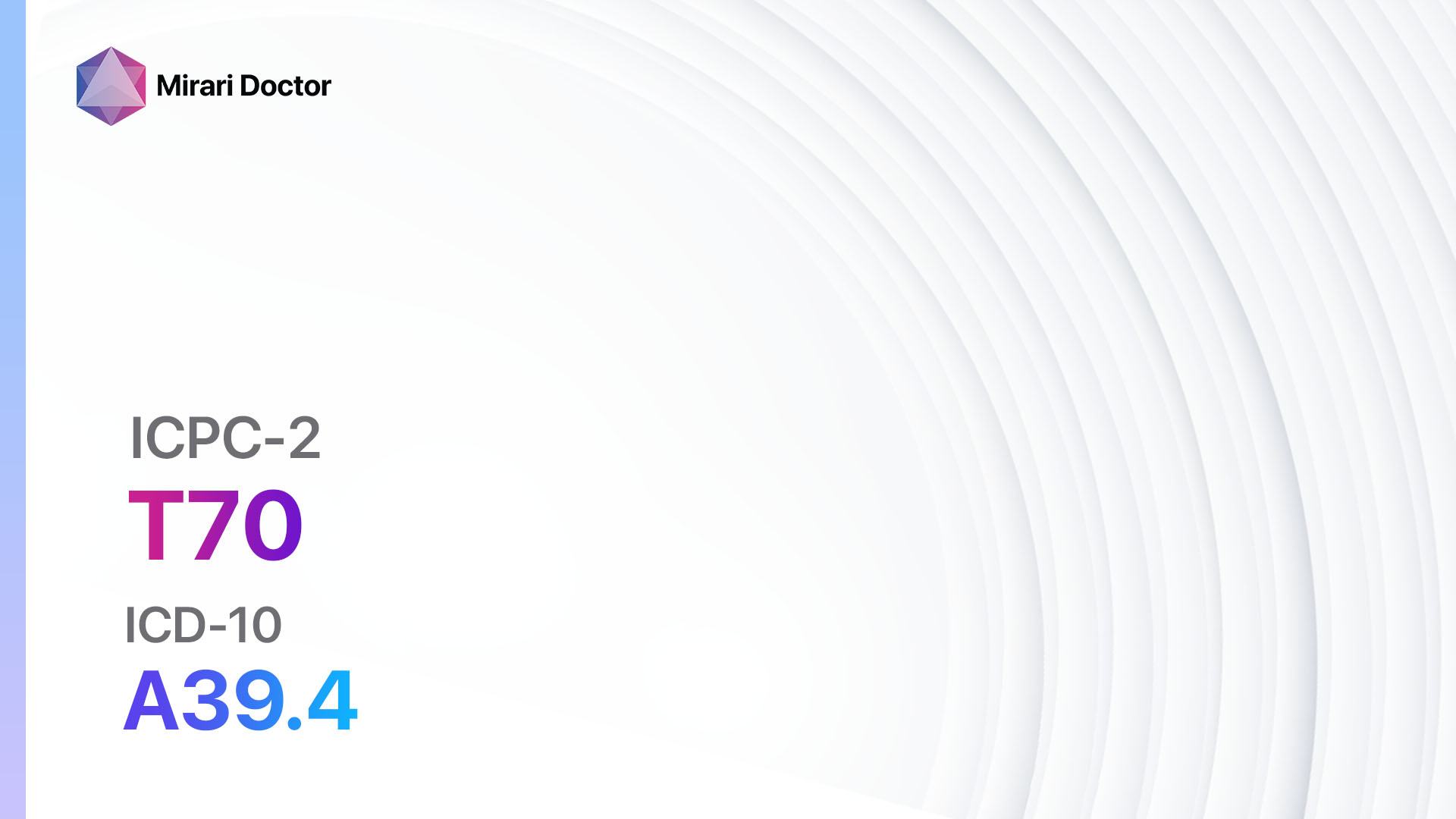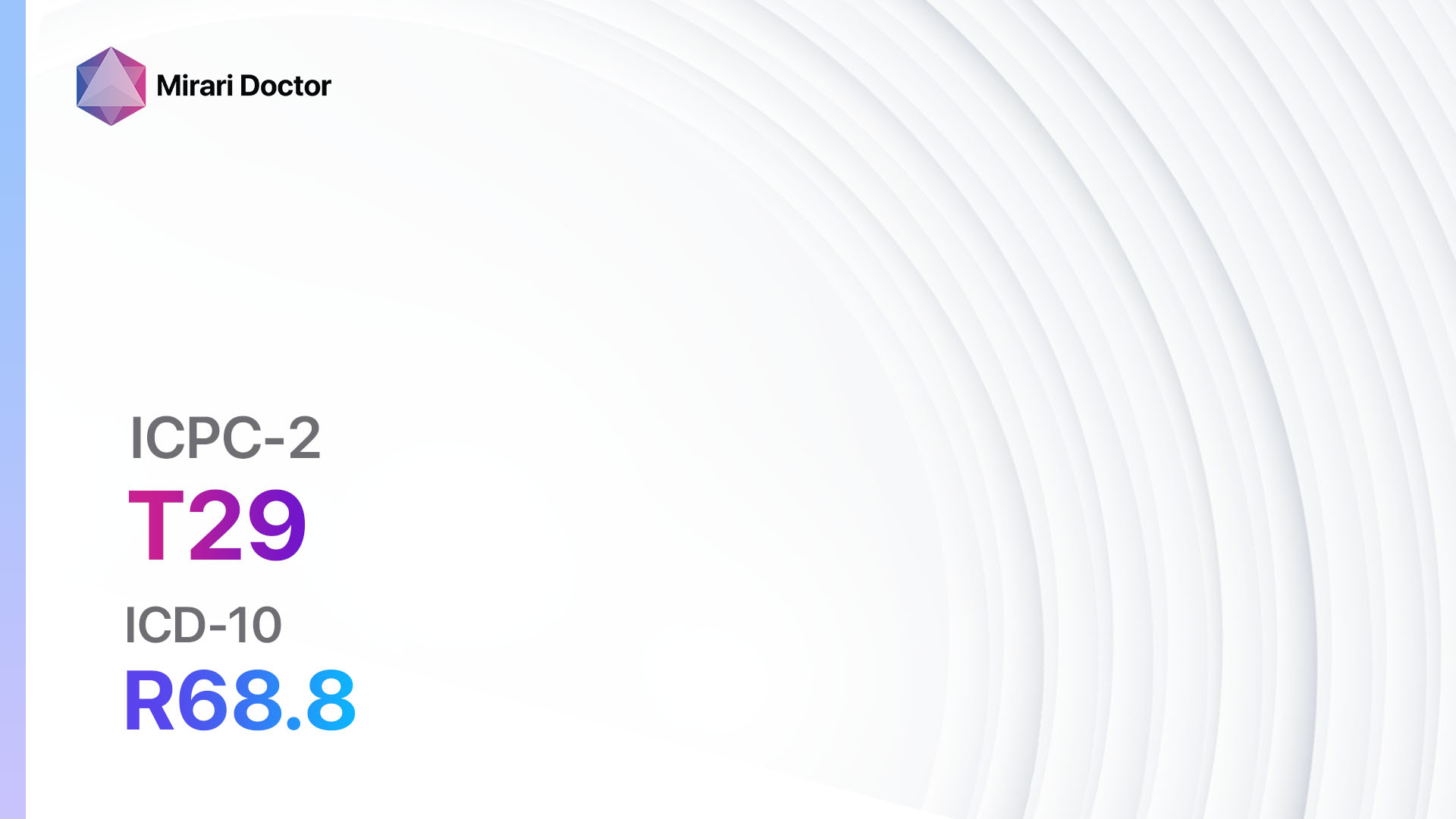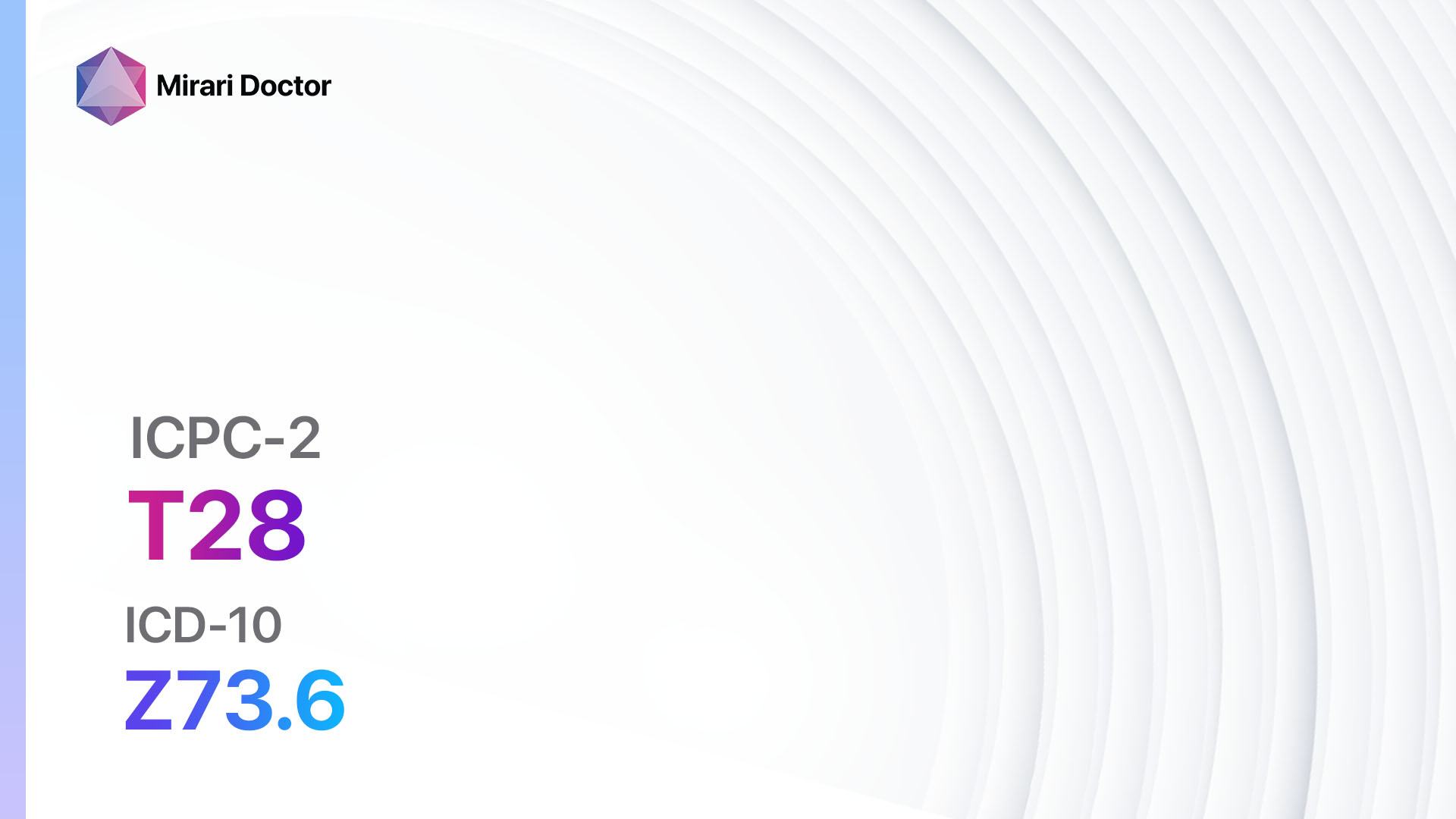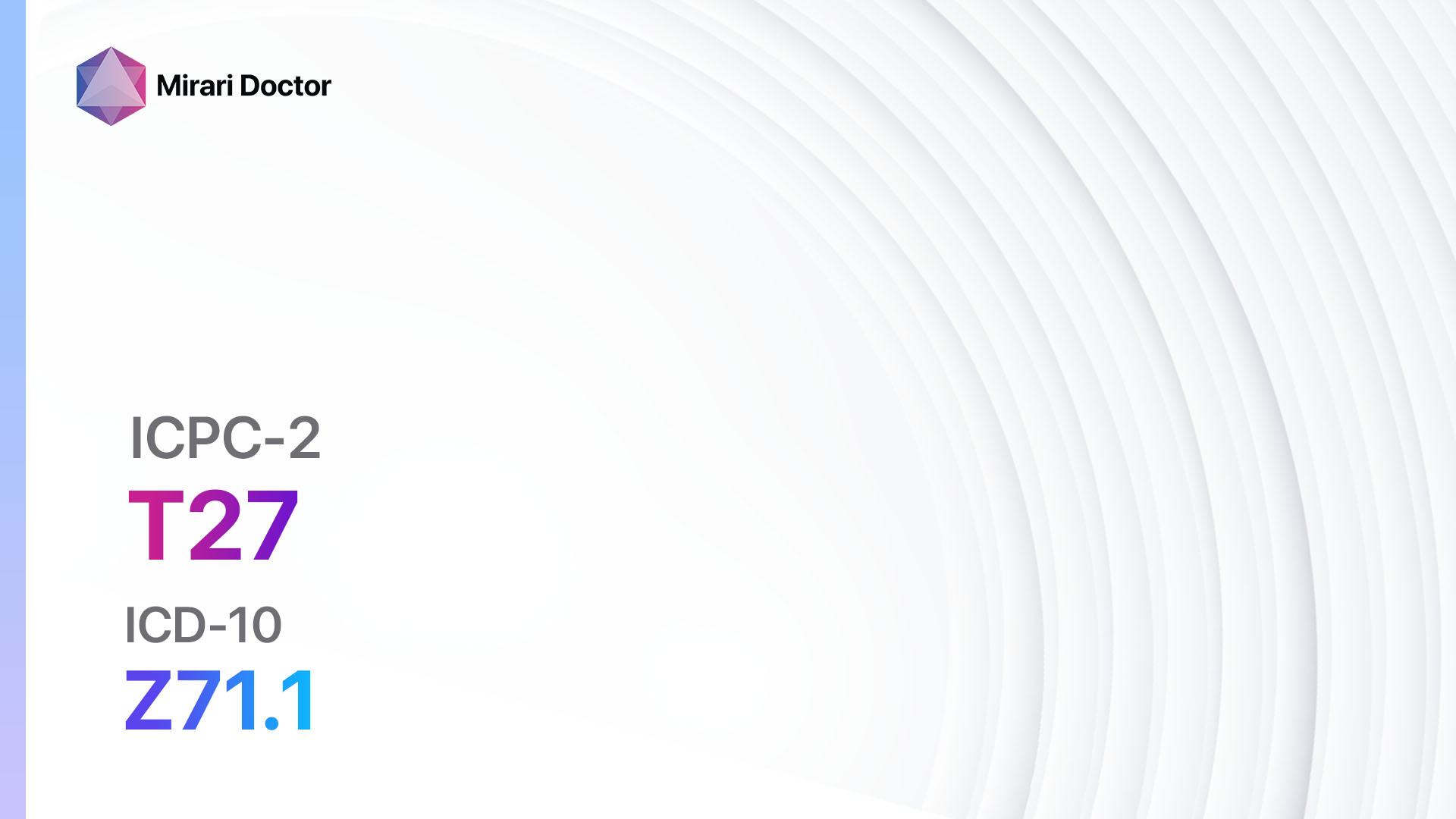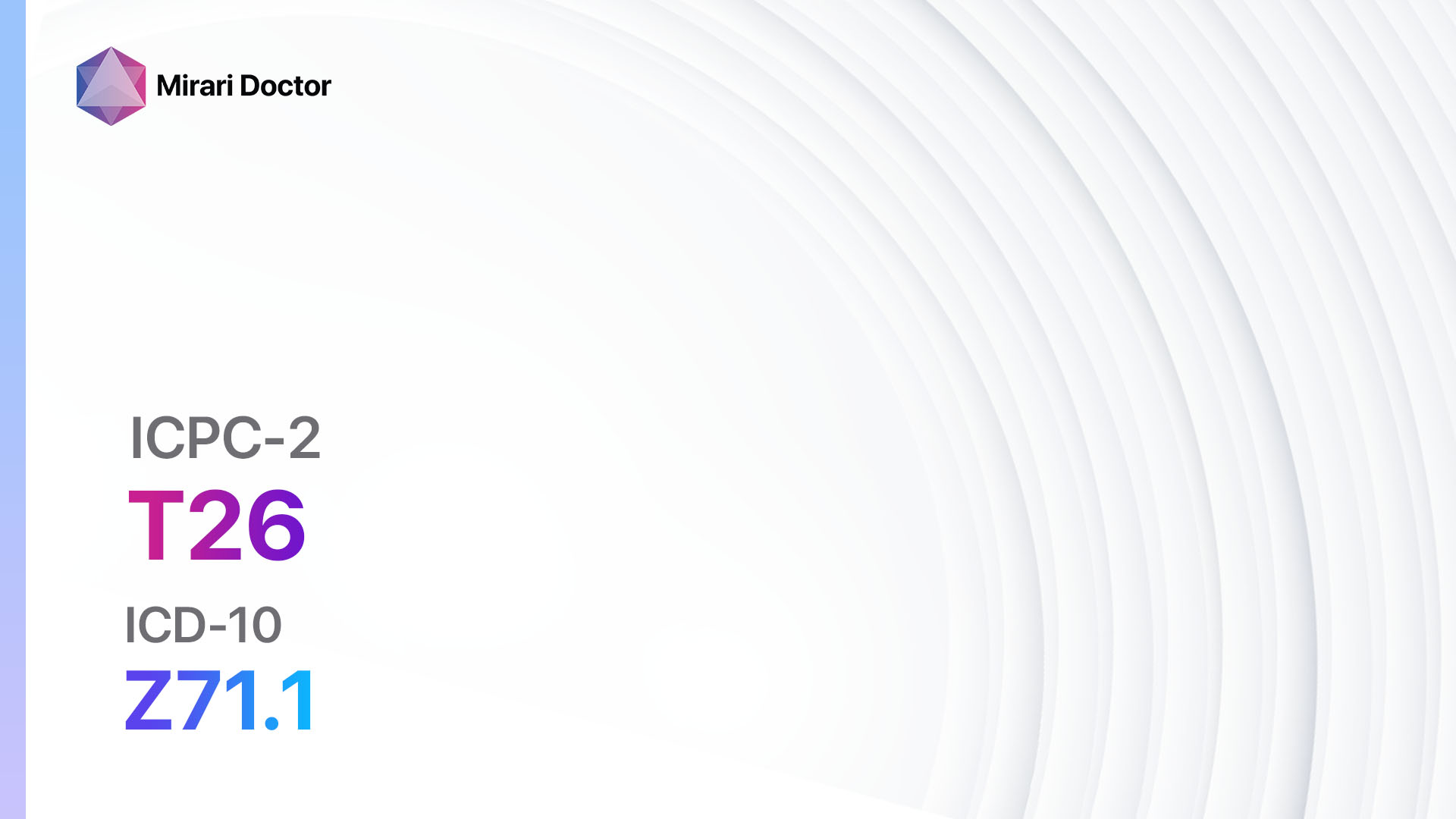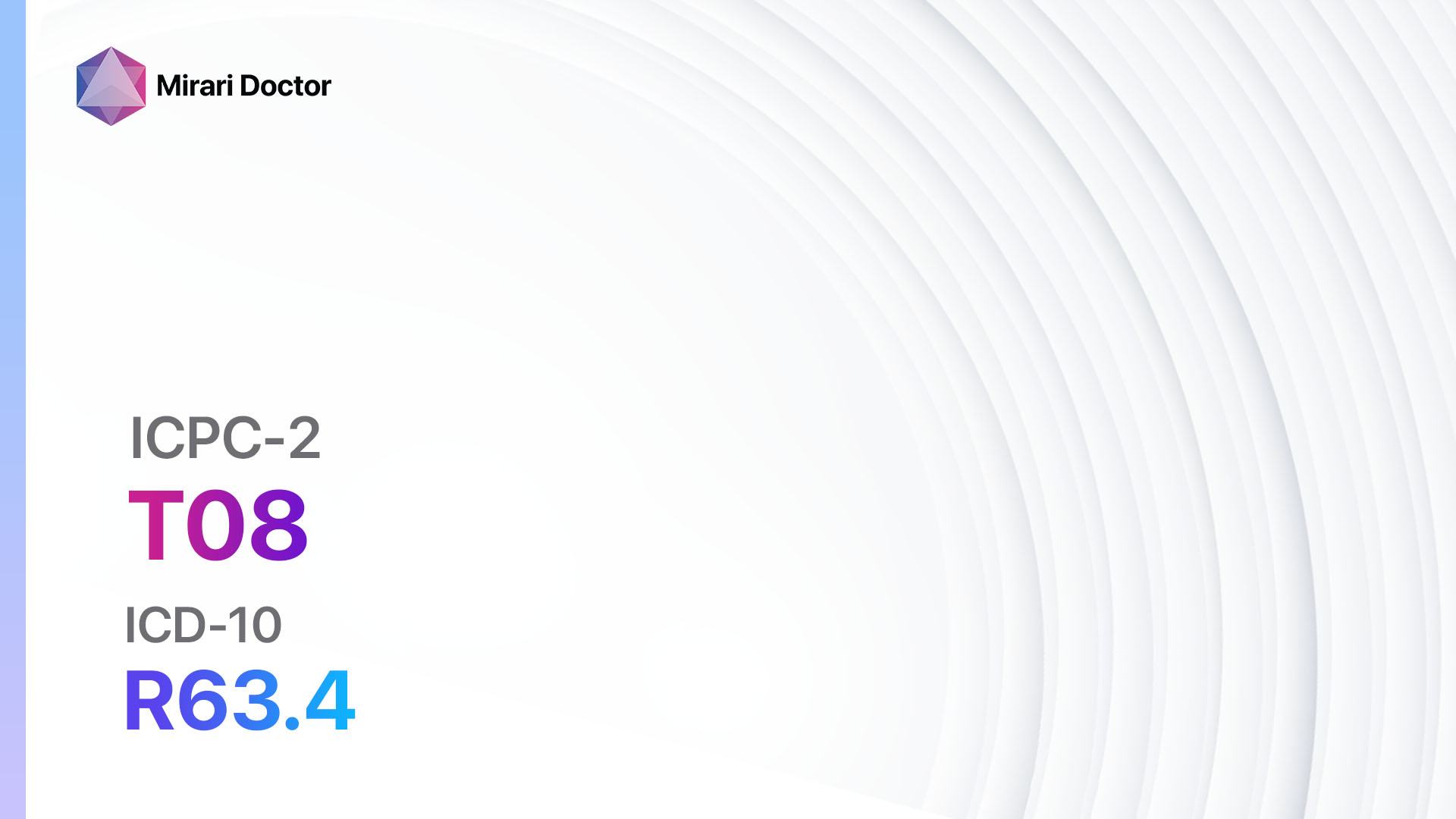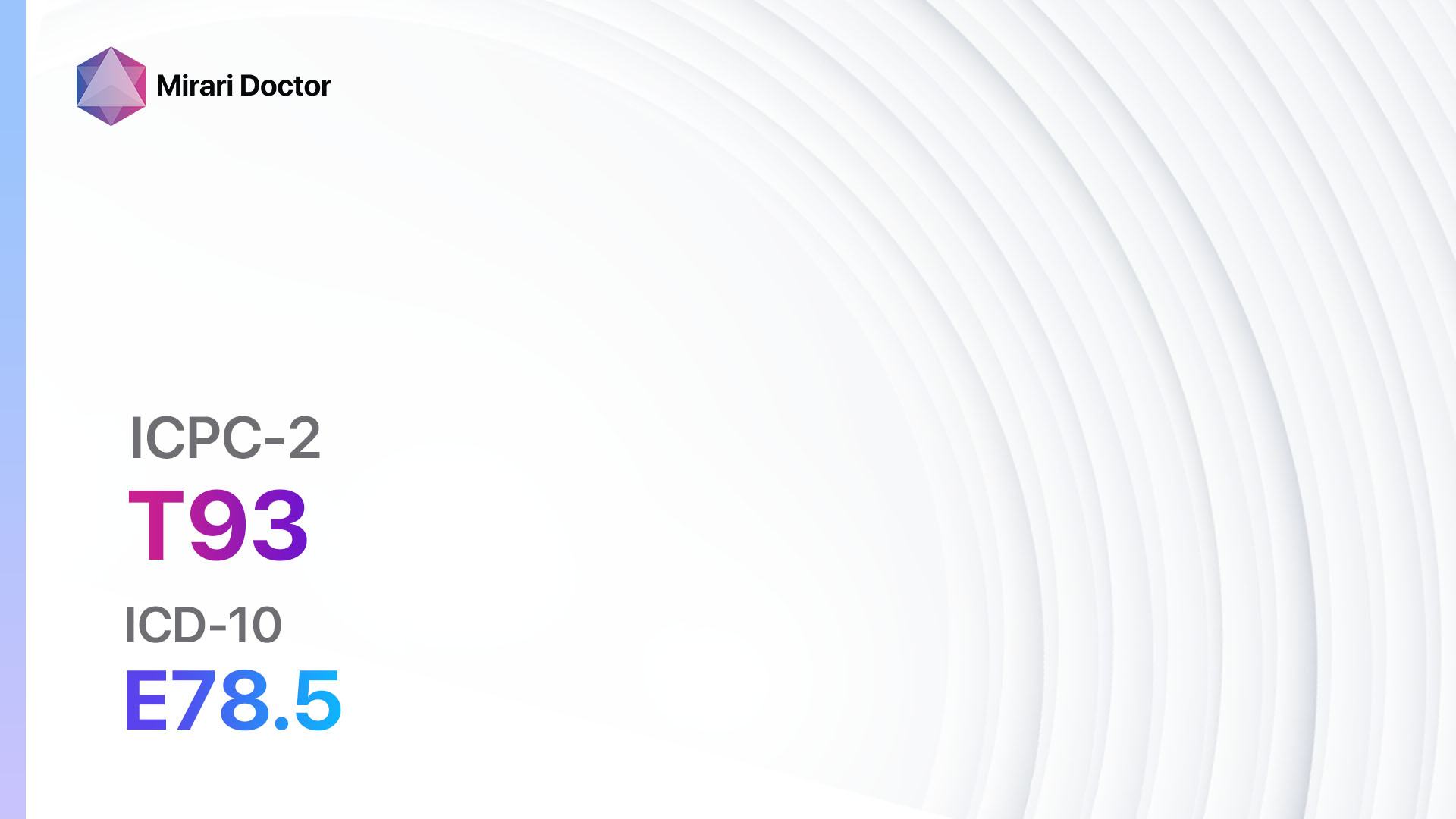
Introduction
Lipid disorder, also known as dyslipidemia, refers to abnormal levels of lipids (such as cholesterol and triglycerides) in the blood. This condition is significant as it can increase the risk of developing cardiovascular diseases, such as heart disease and stroke[1]. The aim of this guide is to provide healthcare professionals with a comprehensive overview of the diagnosis and management of lipid disorders.
Codes
Symptoms
- High cholesterol levels: Elevated levels of total cholesterol, LDL cholesterol, or triglycerides[2].
- Xanthomas: Yellowish deposits of cholesterol under the skin[3].
- Xanthelasma: Yellowish patches around the eyelids[3].
- Arcus senilis: A white or gray ring around the cornea of the eye[3].
- Chest pain or angina: Due to reduced blood flow to the heart[4].
- Shortness of breath: Especially during physical activity[4].
- Fatigue: Feeling tired or weak[4].
- Peripheral artery disease (PAD): Pain or cramping in the legs during physical activity[5].
Causes
- Genetic factors: Certain genetic mutations can lead to lipid disorders[6].
- Poor diet: Consuming a diet high in saturated fats, trans fats, and cholesterol[7].
- Sedentary lifestyle: Lack of physical activity can contribute to lipid disorders[7].
- Obesity: Excess body weight can increase lipid levels[7].
- Diabetes: Poorly controlled diabetes can affect lipid metabolism[8].
- Hypothyroidism: Underactive thyroid gland can lead to lipid abnormalities[8].
- Kidney disease: Impaired kidney function can affect lipid levels[8].
Diagnostic Steps
Medical History
- History Gather information about the patient’s risk factors, such as family history of lipid disorders, heart disease, or stroke[9].
- Inquire about any medical conditions that may contribute to lipid abnormalities, such as diabetes, hypothyroidism, or kidney disease[9].
- Ask about symptoms related to lipid disorders, such as chest pain, shortness of breath, or leg pain during physical activity[9].
Physical Examination
- Check for xanthomas or xanthelasma, which are yellowish deposits of cholesterol under the skin or around the eyelids[3].
- Look for arcus senilis, a white or gray ring around the cornea of the eye[3].
- Assess for signs of peripheral artery disease (PAD), such as weak or absent pulses in the extremities, cool or pale skin, or hair loss on the legs[5].
Laboratory Tests
- Lipid profile: Measures levels of total cholesterol, LDL cholesterol, HDL cholesterol, and triglycerides[10].
- Fasting blood glucose: To assess for diabetes or impaired glucose tolerance[10].
- Thyroid function tests: To evaluate thyroid hormone levels[10].
- Kidney function tests: To assess kidney function and rule out kidney disease[10].
- Liver function tests: To evaluate liver health and rule out liver disease[10].
- C-reactive protein (CRP): A marker of inflammation that may be elevated in individuals with lipid disorders[10].
Diagnostic Imaging
- Carotid ultrasound: To assess the presence of plaque in the carotid arteries.
- Ankle-brachial index (ABI): Measures blood pressure in the arms and legs to evaluate for peripheral artery disease (PAD).
- Coronary angiography: Invasive procedure to visualize the coronary arteries and assess for blockages.
Other Tests
- Genetic testing: May be considered in individuals with a strong family history of lipid disorders.
- Echocardiogram: To evaluate heart function and assess for any structural abnormalities.
- Stress test: Measures the heart’s response to physical activity and can help diagnose coronary artery disease.
Follow-up and Patient Education
- Schedule regular follow-up appointments to monitor lipid levels and assess the effectiveness of interventions.
- Educate the patient about the importance of lifestyle modifications and medication adherence.
- Provide resources for healthy eating, physical activity, and smoking cessation.
Possible Interventions
Traditional Interventions
Medications:
Top 5 drugs for Lipid Disorders:
- Statins (e.g., Atorvastatin, Simvastatin, Rosuvastatin):
- Cost: Generic versions can be $3-$50/month.
- Contraindications: Active liver disease, hypersensitivity.
- Side effects: Muscle pain, diarrhea, upset stomach.
- Severe side effects: Rhabdomyolysis, liver damage.
- Drug interactions: Grapefruit juice, other cholesterol-lowering agents.
- Warning: Regular liver function tests required.
- Fibrates (e.g., Fenofibrate):
- Cost: Generic versions can be $10-$100/month.
- Contraindications: Severe liver or kidney disease, gallbladder disease.
- Side effects: Upset stomach, diarrhea, muscle pain.
- Severe side effects: Rhabdomyolysis, liver toxicity.
- Drug interactions: Statins, warfarin.
- Warning: Regular liver function tests required.
- Bile acid sequestrants (e.g., Cholestyramine, Colesevelam):
- Cost: Generic versions can be $10-$100/month.
- Contraindications: Complete biliary obstruction, hypertriglyceridemia.
- Side effects: Constipation, bloating, gas.
- Severe side effects: Vitamin deficiencies, increased triglyceride levels.
- Drug interactions: Statins, warfarin.
- Warning: Take other medications at least 1 hour before or 4-6 hours after taking bile acid sequestrants.
- Ezetimibe:
- Cost: $10-$100/month.
- Contraindications: Active liver disease, hypersensitivity.
- Side effects: Diarrhea, abdominal pain, fatigue.
- Severe side effects: Rhabdomyolysis, liver damage.
- Drug interactions: Statins, cyclosporine.
- Warning: Regular liver function tests required.
- Omega-3 fatty acids (e.g., Fish oil supplements):
- Cost: $10-$50/month.
- Contraindications: Fish or shellfish allergy, bleeding disorders.
- Side effects: Fishy aftertaste, gastrointestinal upset.
- Severe side effects: Bleeding, allergic reactions.
- Drug interactions: Anticoagulants, antiplatelet drugs.
- Warning: May increase bleeding risk.
Surgical Procedures:
- Angioplasty and stent placement: A catheter is used to place a stent to open up narrowed arteries.
- Cost: $15,000 to $50,000.
- Coronary artery bypass surgery (CABG): Redirects blood around blocked or narrowed coronary arteries.
- Cost: $70,000 to $200,000.
Alternative Interventions
- Acupuncture: May help improve blood flow and reduce pain.
- Cost: $60-$120 per session.
- Chelation therapy: Controversial treatment involving the administration of chelating agents to remove heavy metals from the body.
- Cost: $75-$150 per session.
- Hyperbaric oxygen therapy: Involves breathing pure oxygen in a pressurized chamber to increase oxygen delivery to tissues.
- Cost: $200-$300 per session.
- Herbal supplements: Some herbs, such as garlic and ginkgo biloba, may have potential benefits for improving circulation.
- Cost: Varies depending on the specific supplement.
Lifestyle Interventions
- Dietary modifications: Adopting a heart-healthy diet low in saturated fats, trans fats, and cholesterol.
- Regular physical activity: Engaging in aerobic exercise for at least 150 minutes per week.
- Weight management: Achieving and maintaining a healthy body weight.
- Smoking cessation: Quitting smoking to reduce the risk of cardiovascular diseases.
- Limiting alcohol consumption: Moderating alcohol intake to reduce the risk of lipid disorders.
- Stress management: Implementing stress-reducing techniques, such as meditation or yoga.
It is important to note that the cost ranges provided are approximate and may vary depending on the location and availability of the interventions.
Mirari Cold Plasma Alternative Intervention
Understanding Mirari Cold Plasma
- Safe and Non-Invasive Treatment: Mirari Cold Plasma is a safe and non-invasive treatment option for various skin conditions. It does not require incisions, minimizing the risk of scarring, bleeding, or tissue damage.
- Efficient Extraction of Foreign Bodies: Mirari Cold Plasma facilitates the removal of foreign bodies from the skin by degrading and dissociating organic matter, allowing easier access and extraction.
- Pain Reduction and Comfort: Mirari Cold Plasma has a local analgesic effect, providing pain relief during the treatment, making it more comfortable for the patient.
- Reduced Risk of Infection: Mirari Cold Plasma has antimicrobial properties, effectively killing bacteria and reducing the risk of infection.
- Accelerated Healing and Minimal Scarring: Mirari Cold Plasma stimulates wound healing and tissue regeneration, reducing healing time and minimizing the formation of scars.
Mirari Cold Plasma Prescription
Video instructions for using Mirari Cold Plasma Device – T93 Lipid disorder (ICD-10:E78.5)
| Mild | Moderate | Severe |
| Mode setting: 7 (Immunotherapy) Location: 1 (Sacrum) Morning: 15 minutes, Evening: 15 minutes |
Mode setting: 7 (Immunotherapy) Location: 1 (Sacrum) Morning: 30 minutes, Lunch: 30 minutes, Evening: 30 minutes |
Mode setting: 7 (Immunotherapy) Location: 1 (Sacrum) Morning: 30 minutes, Lunch: 30 minutes, Evening: 30 minutes |
| Mode setting: 7 (Immunotherapy) Location: 4 (Heart, Bile & Pancreas) Morning: 15 minutes, Evening: 15 minutes |
Mode setting: 7 (Immunotherapy) Location: 4 (Heart, Bile & Pancreas) Morning: 30 minutes, Lunch: 30 minutes, Evening: 30 minutes |
Mode setting: 7 (Immunotherapy) Location: 4 (Heart, Bile & Pancreas) Morning: 30 minutes, Lunch: 30 minutes, Evening: 30 minutes |
| Mode setting: 7 (Immunotherapy) Location: 4 (Heart, Bile & Pancreas) Morning: 15 minutes, Evening: 15 minutes |
Mode setting: 7 (Immunotherapy) Location: 4 (Heart, Bile & Pancreas) Morning: 30 minutes, Lunch: 30 minutes, Evening: 30 minutes |
Mode setting: 7 (Immunotherapy) Location: 4 (Heart, Bile & Pancreas) Morning: 30 minutes, Lunch: 30 minutes, Evening: 30 minutes |
| Mode setting: 7 (Immunotherapy) Location: 7 (Neuro system & ENT) Morning: 15 minutes, Evening: 15 minutes |
Mode setting: 7 (Immunotherapy) Location: 7 (Neuro system & ENT) Morning: 30 minutes, Lunch: 30 minutes, Evening: 30 minutes |
Mode setting: 7 (Immunotherapy) Location: 7 (Neuro system & ENT) Morning: 30 minutes, Lunch: 30 minutes, Evening: 30 minutes |
| Total Morning: 60 minutes approx. $10 USD, Evening: 60 minutes approx. $10 USD |
Total Morning: 120 minutes approx. $20 USD, Lunch: 120 minutes approx. $20 USD, Evening: 120 minutes approx. $20 USD, |
Total Morning: 120 minutes approx. $20 USD, Lunch: 120 minutes approx. $20 USD, Evening: 120 minutes approx. $20 USD, |
| Usual treatment for 7-60 days approx. $140 USD – $1200 USD | Usual treatment for 6-8 weeks approx. $2,520 USD – $3,360 USD |
Usual treatment for 3-6 months approx. $5,400 USD – $10,800 USD
|
 |
|
Use the Mirari Cold Plasma device to treat Lipid disorder effectively.
WARNING: MIRARI COLD PLASMA IS DESIGNED FOR THE HUMAN BODY WITHOUT ANY ARTIFICIAL OR THIRD PARTY PRODUCTS. USE OF OTHER PRODUCTS IN COMBINATION WITH MIRARI COLD PLASMA MAY CAUSE UNPREDICTABLE EFFECTS, HARM OR INJURY. PLEASE CONSULT A MEDICAL PROFESSIONAL BEFORE COMBINING ANY OTHER PRODUCTS WITH USE OF MIRARI.
Step 1: Cleanse the Skin
- Start by cleaning the affected area of the skin with a gentle cleanser or mild soap and water. Gently pat the area dry with a clean towel.
Step 2: Prepare the Mirari Cold Plasma device
- Ensure that the Mirari Cold Plasma device is fully charged or has fresh batteries as per the manufacturer’s instructions. Make sure the device is clean and in good working condition.
- Switch on the Mirari device using the power button or by following the specific instructions provided with the device.
- Some Mirari devices may have adjustable settings for intensity or treatment duration. Follow the manufacturer’s instructions to select the appropriate settings based on your needs and the recommended guidelines.
Step 3: Apply the Device
- Place the Mirari device in direct contact with the affected area of the skin. Gently glide or hold the device over the skin surface, ensuring even coverage of the area experiencing.
- Slowly move the Mirari device in a circular motion or follow a specific pattern as indicated in the user manual. This helps ensure thorough treatment coverage.
Step 4: Monitor and Assess:
- Keep track of your progress and evaluate the effectiveness of the Mirari device in managing your Lipid disorder. If you have any concerns or notice any adverse reactions, consult with your health care professional.
Note
This guide is for informational purposes only and should not replace the advice of a medical professional. Always consult with your healthcare provider or a qualified medical professional for personal advice, diagnosis, or treatment. Do not solely rely on the information presented here for decisions about your health. Use of this information is at your own risk. The authors of this guide, nor any associated entities or platforms, are not responsible for any potential adverse effects or outcomes based on the content.
Mirari Cold Plasma System Disclaimer
- Purpose: The Mirari Cold Plasma System is a Class 2 medical device designed for use by trained healthcare professionals. It is registered for use in Thailand and Vietnam. It is not intended for use outside of these locations.
- Informational Use: The content and information provided with the device are for educational and informational purposes only. They are not a substitute for professional medical advice or care.
- Variable Outcomes: While the device is approved for specific uses, individual outcomes can differ. We do not assert or guarantee specific medical outcomes.
- Consultation: Prior to utilizing the device or making decisions based on its content, it is essential to consult with a Certified Mirari Tele-Therapist and your medical healthcare provider regarding specific protocols.
- Liability: By using this device, users are acknowledging and accepting all potential risks. Neither the manufacturer nor the distributor will be held accountable for any adverse reactions, injuries, or damages stemming from its use.
- Geographical Availability: This device has received approval for designated purposes by the Thai and Vietnam FDA. As of now, outside of Thailand and Vietnam, the Mirari Cold Plasma System is not available for purchase or use.
References
- Grundy SM, et al. 2018 AHA/ACC/AACVPR/AAPA/ABC/ACPM/ADA/AGS/APhA/ASPC/NLA/PCNA Guideline on the Management of Blood Cholesterol. Circulation. 2019;139(25):e1082-e1143.
- National Heart, Lung, and Blood Institute. High Blood Cholesterol. Retrieved from https://www.nhlbi.nih.gov/health-topics/high-blood-cholesterol
- Zak A, Zeman M, Slaby A, Vecka M. Xanthomas: clinical and pathophysiological relations. Biomed Pap Med Fac Univ Palacky Olomouc Czech Repub. 2014;158(2):181-188.
- American Heart Association. Symptoms of Heart Disease. Retrieved from https://www.heart.org/en/health-topics/heart-attack/warning-signs-of-a-heart-attack/heart-attack-symptoms
- Fowkes FG, et al. Comparison of global estimates of prevalence and risk factors for peripheral artery disease in 2000 and 2010: a systematic review and analysis. Lancet. 2013;382(9901):1329-1340.
- Hegele RA, et al. Rare dyslipidaemias, from phenotype to genotype to management: a European Atherosclerosis Society task force consensus statement. Lancet Diabetes Endocrinol. 2020;8(1):50-67.
- Mozaffarian D. Dietary and Policy Priorities for Cardiovascular Disease, Diabetes, and Obesity: A Comprehensive Review. Circulation. 2016;133(2):187-225.
- Feingold KR. Dyslipidemia in Diabetes. [Updated 2020 Aug 10]. In: Feingold KR, Anawalt B, Boyce A, et al., editors. Endotext [Internet]. South Dartmouth (MA): MDText.com, Inc.; 2000-.
- Goff DC Jr, et al. 2013 ACC/AHA guideline on the assessment of cardiovascular risk. Circulation. 2014;129(25 Suppl 2):S49-S73.
- Langlois MR, et al. Quantifying Atherogenic Lipoproteins: Current and Future Challenges in the Era of Personalized Medicine and Very Low Concentrations of LDL Cholesterol. A Consensus Statement from EAS and EFLM. Clin Chem. 2018;64(7):1006-1033.
Related articles
Made in USA


